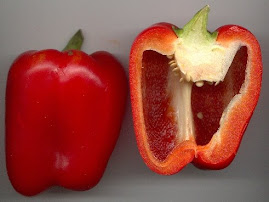Inspired by this, I placed an earring, a flower, and an assorted bunch of miniature plastic fruit and veggies on and around the seder plate.
I also armed myself with whole walnuts, marbles, and sets of 'five stones'; the walnuts were for good questions (such as "what's a flower doing on the seder plate"), the marbles for interesting answers, and the 'five stones' for the answer I was looking for.
My eldest figured out the earring fairly quickly -- it was a reminder of the subject of slavery, where a Jewish slave chooses not to be manumitted at the end of seven years.
Next she bugged me about the flower, which she couldn't figure out. I gave her a hint that it was connected to something in the haggada, so she combed the haggada until, after narrowing it down, she correctly guessed it had to do with פרך -- the Egyptians forced the Jews to work at 'hard' labor, which is almost homonymous with פרח a flower. A classic midrash explains that the Egyptians enticed the Jews into slavery with פה רך -- first they asked them to help out as a favour, and then they said "now keep doing it, or else!".
There were about 40 people and several seder leaders in this extended family seder, and I eventually requested comments and guesses about the remaining group of items. Notable guesses were: "remember the fruit and veggies we got for free in egypt" (one of the complaints during the sojourn in the desert), and "other vegetables" (from the four questions -- contrasting the bitter herbs with other veggies).
Putting the props back in the order I intended, the flower was to prompt discussion on how people get entangled in slavery (or how our ancestors in Egypt did), the earring to remind us that slavery remained an issue even after we left Egypt, and the fruit and veggies to remind us that agricultural (and other manual) workers the world over (including in Israel and the US) are often illegal immigrants who are held in virtual (and not so virtual) slavery.
